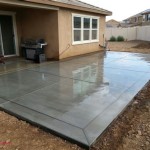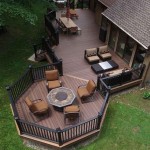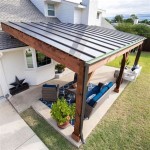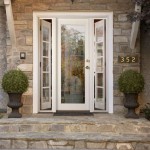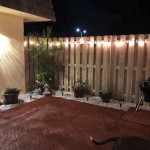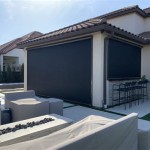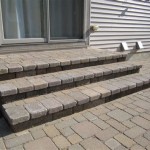A Long Table For Patio Entertaining Areas
Expanding outdoor living spaces has become increasingly popular, with patios serving as extensions of the home for dining, relaxation, and entertainment. Central to a well-designed patio is the dining area, and the selection of a suitable table is crucial. A long table, in particular, presents a compelling option for those who frequently entertain, offering both aesthetic appeal and functional benefits for enhanced patio experiences.
The decision to incorporate a long table into a patio entertainment area requires careful consideration of several factors, including the available space, the desired aesthetic, the intended use, and the materials used in its construction. This article will explore the advantages of a long table for patio entertaining, discussing key considerations for choosing the right table and outlining best practices for maximizing its utility and enjoyment.
Accommodating Larger Gatherings
The primary advantage of a long table is its capacity to comfortably seat a larger number of guests. This is particularly beneficial for individuals who frequently host dinner parties, barbecues, or other social gatherings. Instead of arranging multiple smaller tables, which can create a fragmented and less cohesive dining experience, a long table provides a centralized gathering point, fostering a sense of community and encouraging conversation among all attendees.
When planning an outdoor event, seating arrangements can often be a logistical challenge. Ensuring that everyone has a place to sit and that the seating arrangement facilitates interaction can be difficult. A long table simplifies this process, providing ample and contiguous seating that eliminates the need for complex table configurations and ensures that all guests feel included in the conversation and activities.
Beyond formal events, a long table can also serve as a versatile space for casual gatherings. It can accommodate family members for everyday meals, provide a surface for outdoor games and activities, or serve as a buffet table for potlucks and informal get-togethers. The extended surface area offers flexibility in how the space is used and allows for a more dynamic and adaptable patio environment.
The convenience of accommodating larger groups extends beyond the immediate seating capacity. A long table also provides ample surface area for serving dishes, drinks, and decorations. This reduces the need for additional side tables or serving carts, streamlining the dining experience and minimizing clutter on the patio. The generous surface area also allows for more elaborate centerpieces and decorative arrangements, enhancing the overall ambiance of the outdoor space.
Enhancing Patio Aesthetics
In addition to its functional benefits, a long table can be a striking design element that enhances the overall aesthetic of the patio. Its elongated shape creates a visual focal point, drawing the eye and establishing a sense of scale and proportion within the outdoor space. The table's presence can contribute to a more polished and sophisticated look, elevating the overall impression of the patio.
The choice of materials and design of the long table can significantly influence the overall aesthetic. A rustic wooden table can create a warm and inviting ambiance, while a sleek metal table can lend a more modern and minimalist feel. The table's design should complement the existing architectural style of the house and the surrounding landscaping, creating a cohesive and harmonious outdoor environment.
The placement of the long table within the patio is also crucial to its impact on the aesthetic. Aligning the table with a prominent architectural feature, such as a pergola or a fireplace, can create a sense of symmetry and order. Positioning the table to take advantage of scenic views can enhance the dining experience and provide a captivating backdrop for outdoor gatherings. Careful consideration of the table's placement ensures that it not only serves its functional purpose but also contributes to the overall visual appeal of the patio.
Consider the surrounding elements. Integrating the long table with complementary outdoor furniture, such as comfortable chairs and strategically placed lighting, can further enhance the patio's aesthetic appeal. Outdoor rugs can define the dining area and add a touch of warmth and texture. Potted plants and decorative accessories can personalize the space and create a more inviting atmosphere. The goal is to create a cohesive and visually appealing outdoor environment that reflects the personal style of the homeowner.
Material Selection and Durability
The selection of materials for a long table intended for outdoor use is paramount, as it directly impacts its durability and longevity. Exposure to the elements, including sun, rain, and temperature fluctuations, can degrade certain materials over time. Therefore, it is essential to choose materials that are specifically designed to withstand these conditions and require minimal maintenance.
Wood is a popular choice for outdoor tables, offering a natural and inviting aesthetic. However, not all woods are equally suitable for outdoor use. Hardwoods such as teak, cedar, and redwood are naturally resistant to moisture, insects, and decay, making them ideal choices for outdoor furniture. These woods contain natural oils that protect them from the elements and help them retain their beauty over time. Regular cleaning and occasional oiling can further extend the lifespan of wooden tables.
Metal is another durable option for outdoor tables, particularly aluminum and stainless steel. Aluminum is lightweight, rust-resistant, and relatively inexpensive, making it a practical choice for many homeowners. Stainless steel is more expensive but offers superior strength and corrosion resistance, making it a good option for coastal areas or regions with harsh weather conditions. Metal tables are typically easy to clean and require minimal maintenance, making them a convenient choice for busy individuals.
Composite materials, such as recycled plastic and wood-plastic composites, are gaining popularity as sustainable and durable alternatives to traditional materials. These materials are resistant to moisture, insects, and fading, and they require virtually no maintenance. Composite tables are available in a variety of colors and styles, making them a versatile option for different patio designs. They also contribute to environmental sustainability by utilizing recycled materials and reducing the demand for virgin resources.
Regardless of the chosen material, it is essential to ensure that the table is properly sealed and protected from the elements. Applying a sealant or stain can help to protect the wood from moisture and UV damage, while powder coating can enhance the durability and appearance of metal tables. Regular maintenance, such as cleaning and reapplying sealant as needed, can significantly extend the lifespan of the table and keep it looking its best.
Size and Proportion Considerations
Selecting the appropriate size and proportion for a long table is crucial for functionality and aesthetic harmony within the patio space. A table that is too large can overwhelm the area, making it feel cramped and uncomfortable, while a table that is too small may not adequately serve its intended purpose. Therefore, careful consideration of the available space and the intended use of the table is essential.
Measure the dimensions of the patio to determine the maximum size of the table that can comfortably fit within the space. Leave ample room for circulation around the table, ensuring that guests can easily move around without feeling crowded. Consider the placement of other furniture, such as chairs, side tables, and planters, and ensure that the table complements these elements without obstructing pathways or creating a cluttered appearance.
The length of the table should be proportionate to the width of the patio. A table that is excessively long and narrow can appear awkward and unbalanced. Aim for a table length that is approximately two-thirds to three-quarters of the patio's width. This proportion will create a sense of visual balance and harmony within the outdoor space.
The height of the table is another important consideration. Standard dining table height is typically around 30 inches, which is suitable for most chairs and provides a comfortable dining experience. However, if the table is intended for use with bar stools or high-top chairs, a taller table height may be necessary. Consider the height of the chairs or stools that will be used with the table and ensure that the table height is appropriate for comfortable seating.
It's also important to consider the number of people the table is intended to accommodate. A general guideline is to allow approximately 24 inches of width per person. For example, a table that is 8 feet long can comfortably seat 8 to 10 people. However, this is just a guideline, and the actual seating capacity may vary depending on the width of the chairs and the desired level of comfort.
Care and Maintenance
Proper care and maintenance are essential for preserving the beauty and extending the lifespan of a long table used in a patio entertaining area. Regular cleaning, protection from the elements, and occasional repairs can help to keep the table looking its best for years to come. The specific maintenance requirements will vary depending on the materials used in its construction, but some general guidelines apply to all types of outdoor tables.
Regular cleaning is essential for removing dirt, dust, and debris that can accumulate on the table's surface. Use a mild soap and water solution to clean the table, and avoid using harsh chemicals or abrasive cleaners that can damage the finish. Rinse the table thoroughly with clean water and allow it to dry completely before using it. For stubborn stains, a soft-bristled brush or sponge can be used to gently scrub the affected area.
Protecting the table from the elements is crucial for preventing damage and extending its lifespan. When not in use, cover the table with a waterproof cover to protect it from rain, snow, and sun. Store the table indoors during the winter months, if possible, to prevent it from being exposed to extreme temperatures and moisture. If indoor storage is not feasible, consider using a heavy-duty outdoor cover that is specifically designed to protect furniture from the elements.
Occasional repairs may be necessary to address minor damage, such as scratches, dents, or loose joints. For wooden tables, scratches can be sanded down and refinished with a sealant or stain. Loose joints can be tightened with screws or glue. For metal tables, dents can be hammered out and repainted. Consult with a professional furniture repair specialist for more complex repairs.
Following these care and maintenance guidelines will help to ensure that a long table remains a beautiful and functional centerpiece of a patio entertaining area for many years. Consistent care and attention will not only extend its lifespan but also preserve its aesthetic appeal, making it a source of pride and enjoyment for homeowners.

13 Party Ready Outdoor Spaces Dining Room Dinner
40 Amazing Outdoor Dining Area Ideas And Designs Renoguide N Renovation Inspiration

Backyard Entertainment Space Ideas

Upgrading Your Outdoor Space For More Fun And Profit The New York Times

How To Design A Modern Outdoor Entertaining Space Lumens

Alfresco Ideas For A Space You Ll Want To Relax And Entertain In Home Beautiful

Lancaster Table Seating 32 X 60 Brown Powder Coated Aluminum Dining Height Outdoor With Umbrella Hole And 6 Side Chairs

Summer Outdoor Dining Space Reveal Maison De Pax

Lancaster Table Seating 32 X 60 Black Powder Coated Aluminum Dining Height Outdoor With Umbrella Hole

Everything You Need To Create A Cozy Outdoor Entertaining Area
Related Posts

